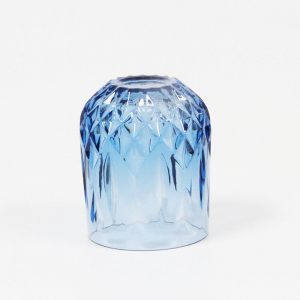Printing on glassware involves applying designs, patterns, logos, or text onto the surface of the glass. There are several methods for printing on glassware, each with its own advantages and limitations. Here are some common printing methods used for glassware:
1. Screen Printing:
- Screen printing involves using a mesh screen to transfer ink onto the glass surface.
- A stencil is created on the screen, and ink is pushed through the open areas onto the glass.
- Screen printing is versatile and can be used for single-color or multicolor designs.
- It’s suitable for larger production runs and offers good durability.
2. Decal Transfer Printing:
- Decal transfer printing involves applying pre-printed designs, often on a paper or plastic backing, onto the glass using heat and pressure.
- Once applied, the decal is permanently fused onto the glass surface.
- This method allows for intricate and detailed designs and is commonly used for custom glassware.
3. Pad Printing:
- Pad printing uses a silicone pad to transfer ink from an engraved plate onto the glass surface.
- It’s commonly used for irregularly shaped glassware and can achieve precise and detailed designs.
- Pad printing is versatile and can accommodate different colors.
4. Digital Printing:
- Digital printing uses digital technology to directly print designs onto the glass surface.
- It’s versatile and allows for full-color, high-resolution prints.
- Digital printing is suitable for custom designs and smaller production runs.
5. Laser Etching:
- Laser etching involves using a laser to engrave designs or text onto the glass surface.
- It creates a permanent, precise, and detailed design.
- Laser etching can be used for both decorative and functional purposes.
6. Sandblasting:
- Sandblasting involves using a stream of abrasive material to create designs by etching the glass surface.
- It can create intricate patterns, textures, and depth.
- Sandblasting is often used for creating personalized and artistic designs.
7. UV Printing:
- UV printing uses ultraviolet light to cure ink onto the glass surface.
- It provides a quick and precise printing process with good color vibrancy.
- UV printing is often used for custom and high-quality glassware.
Each printing method has its own benefits and considerations, such as design complexity, production volume, and the desired final appearance. When choosing a printing method for glassware, consider factors such as the type of design, the glassware’s shape, and your budget. The chosen printing method can greatly influence the overall aesthetics and quality of the finished glassware product.
















